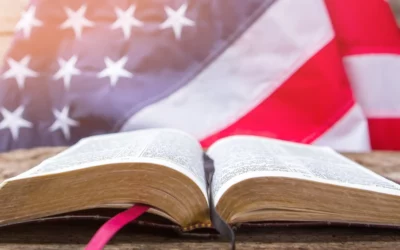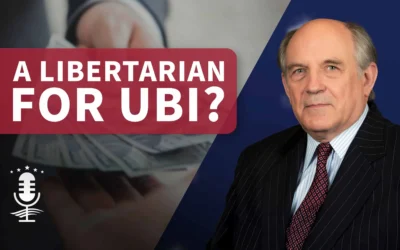Written by
- In just over a month, people of faith and religious sanctuaries have been attacked in high-profile acts of violence and destruction. These are part of increased religiously directed attacks in the United States in recent years.
- These tragic attacks raise serious policy questions about how we can diffuse violence and protect people of faith who are being targeted.
- Religious faith, however, is an important part of the solution because it can help victims recover, promote understanding, and transform tragedies into occasions for magnanimity and forgiveness.

For many Utahns, the recent attack on a meetinghouse of The Church of Jesus Christ of Latter-day Saints in Grand Blanc, Michigan, which resulted in four deaths and eight others wounded, created an unusual sense of vulnerability. People of many faiths have had similar feelings lately.
A month before the Michigan attack, a shooter killed two children and wounded fourteen other children and three adults in an attack on students of the Annunciation Catholic School in Minnesota who were gathered for Mass. On September 6, a mosque in Warren, Michigan, was vandalized. Later in September, a man set fire to a Chabad Jewish Center in Florida. And less than a week after the Michigan attack, two people were killed in an attack on a synagogue in Manchester, England.
These attacks are part of a pattern of increasing violence directed at houses of worship and people of faith. The majority of religiously targeted violence is directed at Jews. Since the October 7, 2023, massacre of Jewish civilians in Israel, antisemitic incidents, including violence, have surged internationally. The American Jewish Congress reports that 33% “of American Jews say they were a target of an antisemitic incident—a physical attack, a remark in person, antisemitic vandalism or messaging, antisemitic remark or post online or through social media, or any other form of antisemitism—in 2024.”
The U.S. Conference of Catholic Bishops reports 396 incidents of arson, vandalism, or destruction at Catholic churches in the United States in the last five years. The Center for Religious Liberty at the Family Research Council catalogs “acts of hostility against churches in the United States” and found a dramatic increase in such attacks (485) in 2023, more than doubling the 2022 total. The number decreased slightly to 415 in 2024 but was still much higher than pre-2023 totals.
In the wake of recent attacks, the Washington Post described increased security measures some faith groups are considering. The article noted, however, that there is something deeply disturbing about such conversations. It described some houses of worship in Europe protected by “barbed wire and heavily armed military guards to deter attacks” and requirements that visitors make appointments. It then quotes the thoughtful comments of Michael Masters, national director of a Jewish security organization:
If we get to the point where our religious institutions look like that – to say nothing of the fact that people don’t show up because they’re … concerned about being safe – we will have fundamentally lost a huge part of what it means to be a functioning democracy that upholds religious freedom.
Preventing attacks without diminishing religious freedom is critical, even though it is challenging. There are no easy answers.
Having said that, there is much that faith can provide in the wake of violence and tragedy. Religious teaching and especially practice can be a powerful source of reserves of emotional resilience. Religious faith can also, as Sam Abrams and Sarah Jane Weaver recently explained, transform tragedy into opportunities for growth and facilitate healing and recovery.
The reaction of one man – and others who supported him – to the Michigan meetinghouse attack is a remarkable illustration. Motivated by religious teachings about caring for widows and orphans, David Butler organized a fundraiser for the family of the person who had attacked the church.
We need to promote increased understanding and work to protect vulnerable religious communities. We also need to personally contribute to the effort to replace hatred and vituperation with appreciation and even love. Paradoxically, the very practices and beliefs that are targeted are likely to be the best sources of motivation and guidance in doing that.

Insights: analysis, research, and informed commentary from Sutherland experts. For elected officials and public policy professionals.

- In just over a month, people of faith and religious sanctuaries have been attacked in high-profile acts of violence and destruction. These are part of increased religiously directed attacks in the United States in recent years.
- These tragic attacks raise serious policy questions about how we can diffuse violence and protect people of faith who are being targeted.
- Religious faith, however, is an important part of the solution because it can help victims recover, promote understanding, and transform tragedies into occasions for magnanimity and forgiveness.
Read More
What rising violence reveals about freedom and faith
A surge in attacks on churches, synagogues, mosques, and temples challenges more than public safety, it tests the strength of our moral and civic foundations.
Government shutdown and the demise of the U.S. Department of Education
The ongoing government shutdown is accelerating changes to the U.S. Department of Education and highlighting the need for stronger state leadership.
Rethinking welfare, upward mobility, and human dignity | Charles Murray
Most debates on poverty focus on small reforms to America’s welfare system. But what if the system itself is the problem?
Connect with Sutherland Institute
Join Our Donor Network
Follow Us
The post What rising violence reveals about freedom and faith appeared first on Sutherland Institute.












